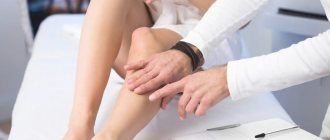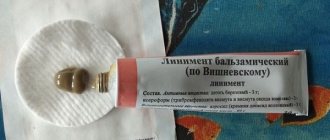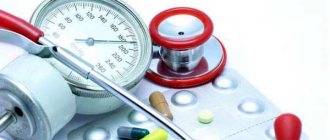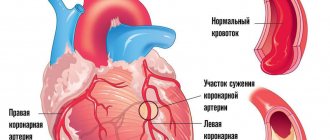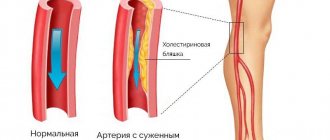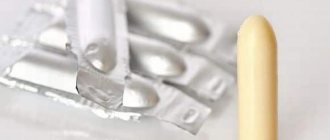How dangerous is the disease?
Every fifth inhabitant of the planet has a pathology of the wall of the veins of the anorectal zone. In 45% of patients who presented with this problem, grade 2 hemorrhoids are diagnosed. This is a turning point of the disease, since at this stage of its development it is still possible to manage with conservative therapy and minimal surgical intervention.
- Symptoms of grade 2 hemorrhoids
- Treatment methods for stage 2 hemorrhoids Drug treatment
- Minimally invasive techniques
- How to treat grade 2 hemorrhoids with folk remedies?
Causes
Hemorrhoids are a disease of the cardiovascular system. Many people mistakenly believe that the disease is associated with the gastrointestinal tract. The main reason for its occurrence is an increase in pressure inside the blood vessels enveloping the anus and sphincter area. Hemorrhoidal nodes are also located there, which become inflamed due to stagnation of blood.
The precursor to the disease may be:
- some infectious diseases;
- gastrointestinal disorder, which is accompanied by constipation, diarrhea;
- decreased muscle tone in the peri-rectal area, for example when lifting weights;
- having anal sex;
- sedentary work combined with insufficient physical activity;
- pregnancy and childbirth;
- performing surgical operations affecting the pararectal area or vessels connected to it;
- abuse of alcohol and foods rich in cholesterol.
Doctors also say that genetic predisposition plays an important role in the development of the disease.
Reasons for the transition of the disease to stage 2
At the beginning of their appearance, hemorrhoids may occur without obvious symptoms. Many patients are embarrassed to see a doctor; some assume that the disease can go away without intervention. Hemorrhoids are a disease that develops in stages, and delay in treatment leads to a transition to the next stage of pathology.
The transition of the disease to stage 2 also occurs under the influence of certain factors:
- Regular consumption of hot and spicy foods, deficiency of plant fiber in the body;
- Constant stressful conditions;
- Excessive drinking, smoking;
- Systematic constipation;
- Heavy physical activity.
Typical signs
Hemorrhoids of the second stage are accompanied by the following symptoms:
- burning and discomfort in the anus;
- the release of a small amount of blood during bowel movements, which is clearly noticeable when using toilet paper;
- discharge of mucus from the anus during bowel movements.
A characteristic feature of the second degree of hemorrhoids is the prolapse of hemorrhoids during defecation. After some time, they heal on their own, the pain decreases somewhat, but the burning sensation and discomfort remain.
Hemorrhoids of the second stage are combined. That is, hemorrhoids become inflamed, but fall out only during defecation, when the abdominal and pubic muscles are tense. And it is precisely because of this that difficulties arise in diagnosing the disease - it is impossible to do without a visual examination of the rectal cavity.
Symptoms of the second stage of hemorrhoids
Hemorrhoids can be acute, but more often they are primarily chronic. Depending on the location of hemorrhoids, they can be internal (the nodes are located in the rectum) and external (the nodes are located outside around the anus), as well as mixed or combined (both external and internal nodes are present at the same time).
The appearance of the external nodes resembles swelling around the anus; in the photo, stage 2 hemorrhoids look like tubercles located in the perianal area, the same color as the surrounding skin. Internal hemorrhoids do not manifest themselves externally before the nodes fall out; the only visible sign of it may be bleeding after bowel movements, usually minor, manifested by scarlet blood stains on toilet paper or an admixture of blood in the stool. Prolapse of hemorrhoids at this stage also usually occurs during bowel movements. Bleeding usually stops on its own, and prolapsed nodes also reset on their own.
The main method of treating second-degree hemorrhoids in the acute stage is drug therapy.
Discomfort in the anal area, itching, burning, and a feeling of constant presence of a foreign body in the rectum appear or intensify. Sometimes the patient complains of a feeling of incomplete bowel movement after defecation.
Since bowel movements are often accompanied by pain, the patient may delay bowel movements, which, in turn, contributes to additional irritation of the rectal mucosa, hardening of the stool and aggravation of symptoms.
Diagnostics
Primary diagnosis of stage 2 hemorrhoids includes:
- sigmoidoscopy;
- anoscopy;
- colonoscopy.
At the discretion of the doctor, the following may also be prescribed:
- taking tests of stool, blood, urine, which will determine the nature of the infectious disease;
- endoscopic examination of the large intestine;
- x-ray of the lower intestine;
- histological examination if there is a suspicion of an active oncological process.
In 95% of cases, only sigmoidoscopy is sufficient. In this case, a special probe is inserted into the rectal cavity, through which the proctologist examines in detail the internal walls of the intestine (lower section). In this way, it is possible to determine the presence of complications of hemorrhoids, such as anal fissures and erosions.
Therapeutic course
Internal hemorrhoids at an early stage respond quite well to drug treatment, so you should not put off going to the doctor. The sooner the final diagnosis is made and appropriate therapy is prescribed, the higher the chance of completely getting rid of the disease.
Self-medication is highly not recommended. There are about five varieties of the same rectal suppositories that are most often used, differing in their active ingredients and pharmacokinetics. And in order to choose effective ones, it is necessary to accurately establish the primary cause of hemorrhoids. It is impossible to do this on your own.
If you allow hemorrhoids to worsen to the chronic stage, then with a high degree of probability, surgical treatment will be required in the future.
Medicines
The following medications are used to treat stage 2 hemorrhoids:
- Analgesics . Eliminate pain symptoms. It is most effective to use in the form of rectal suppositories.
- Anti-inflammatory. Relieves swelling, eliminates burning and discomfort in the anus.
- Venotonics . They normalize the tone of the veins, prevent the expansion of their internal lumen, which subsequently prevents the formation of blood clots.
- Healing . Can be used in the form of suppositories or ointments. They stimulate the regeneration of the rectal mucosa and are necessarily prescribed even for the smallest bleeding.
- Antibiotics . Used to prevent infectious exacerbation of hemorrhoids. As a rule, they are prescribed at elevated temperatures, which is an indication of infection.
- Anticoagulants . They thin the blood, which reduces the likelihood of blood clots forming and indirectly helps to normalize the pressure on the walls of blood vessels.
- Hemostatics . Prescribed only for bleeding, accelerate blood clotting. If there is no bleeding, then it is strictly forbidden to use them.
The patient may also be prescribed the use of disinfectants for hygiene procedures.
What stage 2 hemorrhoids look like in the photo
When the patient does not receive proper treatment, the incipient hemorrhoids move on to the next phase of development.
At stage 2, hemorrhoids only appear in some patients, while in another group the pain intensifies. The pain syndrome becomes more pronounced with increased pushing during defecation. The disease at this stage is characterized by the presence of an internal node with its independent reduction.
In the photo of stage 2 hemorrhoids, you can see fairly enlarged nodules that protrude into the posterior canal. The muscles and ligaments of the rectum degrade over time. Dystrophic processes occur in the tissue structures, due to which the nodes fall out and the possibility of visual inspection is given (if the disease is external).
The photo shows that nodes extending beyond the intestine can be pinched and subject to injury. The clinical picture of the second degree is bright, manifested by thrombosis, bleeding and loss of painful lumps from the intestine.
Minimally invasive methods
In modern medicine, the following minimally invasive methods of treating second stage hemorrhoids are used:
- Sclerotherapy . It involves the injection directly into the hemorrhoidal node of drugs that dissolve formed blood clots and plaques.
- Disarterization . It is carried out through an endoscope. In this case, the vessels feeding the hemorrhoids are ligated, which helps reduce blood flow and relieve inflammation.
- Ligation with latex rings . Allowed only for the treatment of internal hemorrhoids, when the nodes do not fall out during bowel movements. It is considered the safest treatment, but the integrated rings sometimes rupture, requiring a repeat procedure.
- Coagulation . The nodes are cauterized using an infrared ray or laser, after which they are rejected.
- Cryodestruction . The principle is the same as for coagulation, but the nodes are affected using liquid nitrogen.
Using these minimally invasive methods to treat hemorrhoids is allowed only if there is a minimal likelihood of its exacerbation. That is why doctors first prescribe drug therapy, and after 1-2 weeks from the start of the course they allow the above methods of treatment.
Treatment of combined hemorrhoids
With mixed hemorrhoids, the doctor faces two tasks at once:
- reduce the size of enlarged hemorrhoids inside the anal canal;
- removal of external hemorrhoids that have fallen out of the anal canal.
Treatment is carried out in two directions simultaneously. The doctor must decide on the need and scope of surgical treatment; on the other hand, he must prescribe medication treatment.
How combined hemorrhoids will be treated directly depends on the degree of development of the disease. It is generally accepted to distinguish between four degrees of mixed hemorrhoids, and at each degree the treatment will differ significantly.
There are 4 stages of development of mixed hemorrhoids. Do not allow the disease to progress; at the first symptoms, consult a specialist
Combined hemorrhoids 1st degree
Usually, when diagnosing mixed hemorrhoids of the 1st degree, conservative (non-surgical) treatment is used. This is taking various medications (tablets, ointments, suppositories) that can improve a person’s condition, reduce or completely eliminate pain, swelling of the walls of blood vessels.
Combined hemorrhoids 2 degrees
Stage 2 is treated by freezing the hemorrhoids. The name of this method is cryodestruction. This is the removal of tumors and defects with liquid nitrogen. In the second degree of mixed hemorrhoids, it is also possible to tighten the hemorrhoids using latex rings.
Combined hemorrhoids 3rd degree
Treatment for stage 3 mixed hemorrhoids will be much more serious than the previous two. If at the 1st and 2nd stages of development it was possible to get by with medications, then it is possible to cure the third stage only with the help of surgical intervention. This is explained by the fact that all hemorrhoids (external and internal) are already quite large in size, they limit the patient’s movement. Treatment of grade 3 combined hemorrhoids with latex rings is extremely rare, only if the nodes are not too enlarged. The main method of treatment at this stage is surgery using the Longo method. Using special titanium plates, the inflamed nodes are pulled up. This method has good reviews, and the patient can be discharged within 2-4 days after the operation.
Traditional medicine to protect health
Of the traditional methods of treatment, the most effective ones, which doctors recommend to use in practice, are the following:
- Sitz baths with chamomile infusion . They act as an antiseptic, eliminating spasm of the muscle ring, which slightly relieves pain after defecation, when the nodes just fall out. To prepare such baths, prepare 1 liter of concentrated chamomile decoction and mix it with 3 liters of ordinary boiled water.
- Grated potato compresses . Extremely effective for eliminating pain. True, the effect is short-lived, but if you don’t have a painkiller at hand, it’s an excellent alternative.
- Aloe candles . Accelerate regeneration, relieve inflammation, eliminate discomfort. Candles are made only from fresh leaves, the peel along with the needles is cut off. You can use up to 4 of these suppositories per day. They help well to heal anal fissures, which often occur against the background of hemorrhoids.
Treatment
Surgery for grade 2 hemorrhoids is recommended in exceptional cases. Conservative therapy is generally prescribed. The course of treatment is chosen by the doctor; stopping the medication is not allowed until the symptoms disappear completely.
Use tablets:
- Troxevasin and Detralex. The action of the drugs is aimed at improving vascular tone in order to prevent relapses.
- Diclofenac and Ibuprofen. The medications are painkillers and anti-inflammatory drugs. Used to treat inflammation and suppress pain.
Topical medications are intended to relieve symptoms. In most cases, such drugs are prescribed in combination with tablets.
The following ointments are effective for this phase:
- Heparin;
- Troxevasin;
- Proctosan;
- Relief;
- Levomekol.
Ointments help to quickly relieve inflammation, activate blood flow, and improve the elasticity of the walls of blood vessels. Ointments help ease the act of defecation, prevent damage to nodes and the appearance of cracks.
Treatment of stage 2 hemorrhoids using suppositories is a fairly effective method, especially when the bumps are located inside at a noticeable depth.
Almost all suppositories for hemorrhoids contain anesthetics, which explains their analgesic effect. Suppositories help relieve pain, itching, stop bleeding and prevent possible infection of the nodes.
A specialist prescribes suppositories based on an examination and assessment of the patient’s condition.
The following suppositories are in demand:
- Proctosedyl - reduces pain and swelling;
- Prednisolone – relieves burning sensation and suppresses pain;
- Hepatrombin G - reduces the degree of thrombosis.
Also used:
- Spongostan;
- Adroxon;
- Beriplast;
- Tachycomb.
Adrenaline suppositories are used to stop bleeding. In rare cases, when other drugs do not help relieve pain, a novocaine blockade is performed.
In order to improve the general condition, medications are prescribed to normalize the intestinal microflora and laxatives.
Diets and lifestyle
For hemorrhoids of any stage, doctors recommend adhering to a specialized diet. Its key features:
- inclusion of fiber in the diet;
- preference for first courses;
- eat as many vegetables and fruits as possible;
- from meat - only lean chicken fillet;
- fractional nutrition, that is, pre-grind the food using a blender or food processor;
- eat often, but in small portions.
All these tips will help normalize and soften stools, prevent diarrhea and constipation, which significantly increases the likelihood of exacerbation of hemorrhoids.
As for lifestyle, patients are advised to do light physical activity, walk, walk and run as often as possible. The main thing is the load on the legs, since the human circulatory system is built in such a way that when walking, the muscles work like a pump, helping the heart pump blood in the lower extremities, in the pelvic organs. That is, it helps normalize intravascular pressure.
Traditional treatment
Homemade recipes are time-tested and can have a positive effect in treating hemorrhoids. However, it is impossible to treat such a serious pathology as combined hemorrhoids only with them. Traditional methods of treatment should be used as auxiliary methods during conservative therapy and during the recovery period after surgery.
Honey
Candles are cut out from the candied honey and placed overnight. Honey promotes rapid healing of cracks and wounds and has an anti-inflammatory effect.
Juice from fruits and berries
Use blackberries, melon or other sweet types of fruits and berries, the juice of which supplies the body with useful substances and prevents constipation.
Red beetroot
The juice of this wonderful vegetable can be used internally (200 ml per day, in three doses). Beetroot juice is also used for lotions. Red beets have anti-inflammatory, antibacterial and wound-healing properties. Lotions made from vegetable juice help relieve severe pain in the anus.
Sitz baths with a decoction of medicinal herbs (chamomile, St. John's wort, oak bark, sage) are useful.
Prevention of further progression
It is quite possible to prevent the exacerbation of stage 2 hemorrhoids. And you don't need medications for this. Following a gentle diet, as well as regular physical activity will help normalize the patient’s condition.
It is also recommended to give up fatty foods, alcohol, and smoking - all this negatively affects the biochemical composition of the blood, which is why the risk of blood clots and cholesterol plaques increases significantly.
Another prevention method is complete abstinence from anal sex. If this is impossible to do for some reason, then proctologists recommend doing it no more than once a month (if we are talking about the passive role of the partner). And at the same time, you should definitely use an antiseptic and water-based lubricant.
What will happen if left untreated?
It should be taken into account that the second stage of the pathology developed due to the lack of treatment for the initial symptoms. If you do not continue therapy, hemorrhoids develop into the following complicated forms:
- the nodes become inflamed more and more often, both external and internal;
- bleeding contributes to the development of anemia (anemia) with additional symptoms in the form of headaches, weakness, dizziness; it is not easy to compensate for blood loss and restore blood counts;
- infringement and stagnation provoke thrombosis of venous vessels, giving the clinic an acute emergency condition, necrotization of the node tissue;
- trauma to the mucous membrane causes rectal cracks, lack of prevention of exacerbations, untreated inflammation from the nodules spreads to the surrounding tissue, the patient is taken to surgery with acute paraproctitis and sepsis.
These conditions can not only affect health, but also threaten the patient’s life.
The second stage of hemorrhoids makes it possible to choose an effective treatment method and prevent further progression of the pathology. Reluctance to show the intimate area to the doctor has a serious impact on the outcome of the disease. In this case, excessive shyness threatens the ability to work and is dangerous to health.

